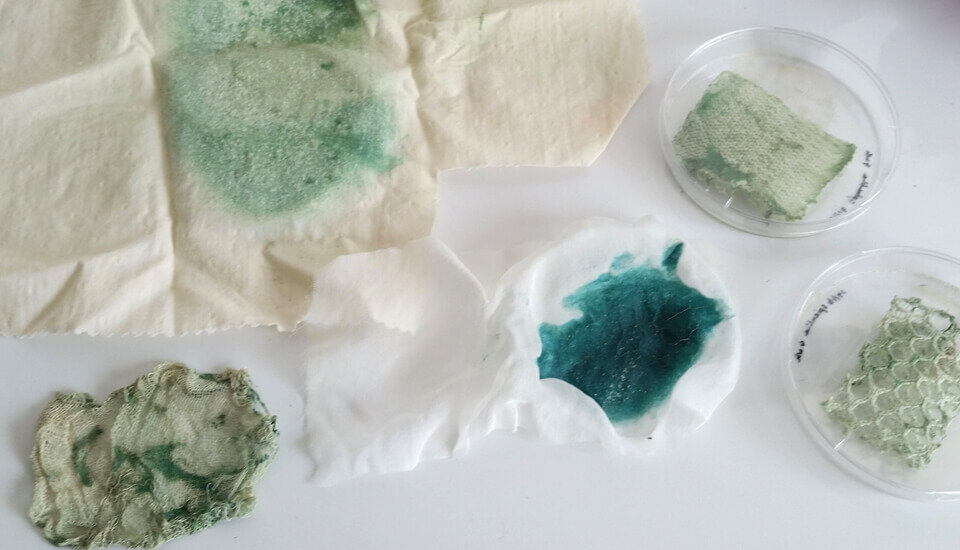

Fast Fashion changed the way we shop. Since its onset in the 1990s the amount of garments produced each year has not only doubled or tripled but is 400% more at an insane 80 billion pieces of clothing produced each year.
With prices low and quality even lower, we’re changing out our wardrobes more often. One study found that 50 million garments are worn once before it meets the trash bin—and that’s just in the UK alone.
What’s happening to the garments that are only worn once, you ask? They’re overflowing our landfills, or dumped in deserts creating dunes of waste. While that’s bad enough on its own, it’s sadly not the only problem that Fast Fashion has created.
Before I get ahead of myself. Let’s cover the bases and take a look at what makes a fast fashion brand, well, fast fashion, and why they for lack of better words, suck.
Fast fashion can be defined as the mass production of clothing that is, hyper trendy and seen as disposable after a few wears. The clothing is made quickly with low-quality materials. The designs are translated (i.e ripped off) from high fashion collections into low-priced garments by mass-market retailers.
It’s a toxic system that focuses on a quantity over quality model using cheap materials and labor to push out thousands of styles in the latest trends. Fast fashion brands work on extremely short timelines, moving from design sketches to having the clothes in stores in just a few weeks. The idea is to sell as much as possible in a short period of time while the styles are at the height of popularity.
This has sped up the trend cycle, making shoppers want to discard their garments more often because they’re “out of style” after a couple of wears. Feeding into the cycle of over-production and consumption.
For those of us under the age of 35 thinking of a world without fast fashion isn’t an easy feat. We came of age with Fast Fashion. Growing up we’d go to the mall to scavenge the racks of stores like TopShop and Forever 21. Looking for the latest trends that wouldn’t break the bank.
When online shopping started to take off, brands like Zara and H&M went viral, and at the time, who could blame us? It was the first time we all had access to trendy fashion at a low price. We didn’t know what was happening behind the scenes or what the larger impact of this new fashion system would bring.
Now we have ultra-fast fashion brands like SHEIN who drop hundreds of new garments daily. The system that was already on overdrive is still accelerating, and if we don’t put our foot to the brakes soon, it’s going to crash. Unfortunately, it won’t be the brands that are hurt in the aftermath, rather our planet will suffer, garment workers will be exploited, and creativity will continue to decline.
Why not sign up for the weekly roundup
When you start to pull back the veil and see past the trendy clothes you’ll find that Fast Fashion is causing a vast array of problems. From environmental concerns to social issues, Fast Fashion has its fingers in it all. Let’s get into it:
The fashion industry is responsible for an astonishing 10% of global greenhouse gas emissions every year. If the industry continues at the same pace, the greenhouse gas emissions are predicted to increase by more than 50% by the year 2030. Needless to say, there’s no wiggle room, the current level of CO2 in the atmosphere already exceeds what is considered safe by scientists.
On top of greenhouse gases, the fashion industry is polluting our waterways with toxic dyes and microplastics. Every year half a million tons of plastic microfibers find their way into our waterways, which is the equivalent of 50 billion plastic bottles. However, unlike bottles, these Microfibers cannot be extracted from the water. They’ve already made their way into our food chain, according to a recent study we eat roughly the size of a credit card in plastic each week.
Fashion depends heavily on natural resources. Water, forests, oil, and our land. Our limited natural resources are being exploited for the gains of fast fashion brands.
A 2015 study shows that 97% of what goes into making clothes comes from new resources, with only 3% of it being recycled materials. Bringing the grand total of resource input to 98 million tons per year.
Water is arguably the most precious resource we have since it’s needed to sustain life. The Fashion industry uses 93 billion cubic meters of our fresh-water supply each year, which is enough to meet the consumption needs of five million people.
Fast fashion contributes to deforestation. According to non-profit Canopy, more than 200 million trees are logged each year to be transformed into cellulosic fabrics like viscose and rayon. This not only cuts down on the amount of CO2 that can be soaked up from our forests but also threatens our planet’s biodiversity.
The land itself is being exploited. Cotton, the second most popular material in the world, is grown in a mono-crop style which degrades the land over time. This means that the soil essential turns to dust, losing all nutrients that are needed to grow crops.
Over time more and more of our land is “unfarmable” It’s estimated that 24 billion tons of fertile soil disappear each year. Two hectares of land were available per capita in 1900 worldwide compared to less than 0.5 hectares in 2010. This is a huge problem because we need fertile land not only to grow cotton but also for the agriculture that supplies us with food.
It’s not just the environment that suffers, it’s the people on the lower side of the fashion totem pole, specifically the garment factory workers.
With a lack of transparency across the industry, 77% of companies operating in the UK believe Modern Slavery might exist somewhere in their supply chains. This was brought public when an investigation by the Sunday Times revealed that the fast fashion retailer Boohoo paid some workers in Leicester £3.50 an hour.
However, most Fast Fashion retailers are producing their collections overseas. By offshoring their production they can capitalize on countries that don’t have strict workers’ rights and regulations. Garment workers are subject to long hours, around 18 hours a day for pay that is under the living wage. A 2019 report found that 0%, yes you read that right, 0% of Bangladeshi garment workers and 1% of Vietnamese garment workers earned a living wage.
These workers live in fear of losing their jobs, which makes them put up with unsafe working conditions and sexual harassment that often goes unreported.
The fashion industry overproduces by about 30-40% each season. This means it’s purposely creating too many garments which turn into solid waste. These garments are then sent to landfills and dumped in places like Chile’s Atacama Desert.
While it seems recycling programs are abundant, less than 1% of clothing is actually recycled or refashioned into something new. It’s not easy to recycle garments because they are normally composed of a mixture of materials that need to be separated before they can be broken down. Depending on the chemicals used during their original production, this can actually be impossible. For some fibers, as they are brought back to their original form they lose quality. Regardless of what brands promote, recycling textiles are not the cure-all fix for the industry.
Fast fashion is driving the pace of consumption to become faster and faster. As stated earlier, today there are more than 80 billion garments consumed each year, which is 400% more than what we produced 20 years ago. On average an American now generates 82 pounds of textile waste each year.
Fast fashion caused the entire fashion system to speed up. Before high fashion brands presented 2 collections a year at max. Today to compete with the fast-fashion brands who put out 52 “micro-seasons” a year, luxury fashion houses are putting out 6 collections a year.
This increase in collections has increased the trend cycle as well. Before the clothes that we bought could be worn for a couple of years before being seen as dated or out of fashion, today we need to refresh our wardrobe monthly to stay in trend. This has led to us keeping our clothes for half as long compared to 15 years ago, and each garment is only worn on average 7-10 times before throwing it away.
Fast Fashion brands have been notorious for copying the designs found on the runway. By changing a few details on the garments they are able to get away with doing this legally. While Zara has come under fire many times for copying designs from luxury fashion houses, SHEIN has taken a different approach.
The Chinese fast-fashion retailer is constantly ripping off smaller independent designers. When the indie designers confront SHEIN they are often ignored, or receive a cold email denying any wrongdoing. The designer behind the brand Elexiay tweeted, “Tonight I feel crushed, @SHEIN_official has stolen my Amelia sweater design. Spent hours designing and brainstorming this design and it takes days to crochet each sweater. It’s quite disheartening to see my hard work reduced to a machine-made copy. 💔”
Unfortunately, this is not a one-off situation, hundreds of designers have taken to social media to call out SHEIN for stealing their designs. By piggy-backing off the hard work that an independent designer goes through to make their collection, fast fashion retailers are diminishing the value that is in fashion, feeding into the toxic “disposable” mindset that we have around fashion today.
It’s also killing creativity and individuality. When we spend a little more on our clothes we think about what we buy, rather than just copying a look that we see on Instagram or TikTok. By making independent designer fashion at the same price as our coffee, people can simply copy and paste a new outfit from influencers, without having to think twice.
That’s a lot of information to take in. For some of you, this isn’t news. For others, this could be your first time hearing about these issues. The fashion industry is a complicated machine, however, there are a lot of amazing people who love fashion and the planet who are working tirelessly to change the system.
While a lot of work needs to be done from the inside, we’re all capable of helping change fashion simply with how we spend our money. Quitting fast fashion isn’t easy, but now that you know the true cost behind what we wear, my hope is that you make a more conscious decision about what you buy and who you buy it from.










© 2023 Maia Conscious Living Privacy Policy | Gabs Nardo LLC
One Response